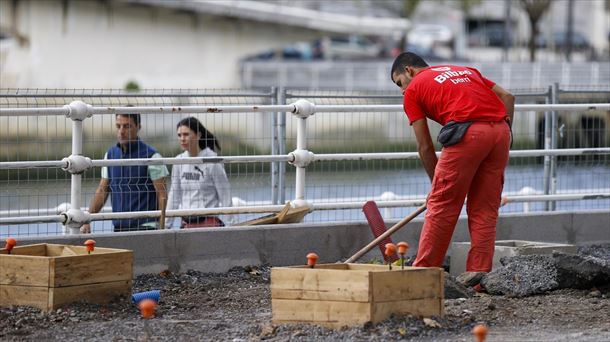Popular recreational areas near Los Alamos, New Mexico, are contaminated with “extreme levels” of plutonium, a new study has found, similar to the 1986 nuclear disaster at Chernobyl.
“This is one of the most shocking things I’ve ever encountered in my life,” Michael Ketterer, a scientist at Northern Arizona University and lead researcher on the project, told The Guardian. The plutonium levels he measured around Acid Canyon were the highest he’d ever seen in a publicly accessible area in the United States during his decades-long career.
The reason for the extreme contamination: The first atomic bombs were developed in the 1940s at Los Alamos National Laboratory. Until the 1960s, radioactive waste was dumped in a nearby ravine, aptly named Acid Canyon.
In the 1980s, the area was finally redeveloped at a cost of at least $2 billion and transferred to the Los Alamos County without restrictions on use, making it a popular local recreation area for cyclists, walkers and joggers.
The research director assesses the environmental risk as worrying
Despite the high plutonium concentration, those seeking relaxation are not in immediate danger. The environmental risk is still a concern because plutonium can enter water supplies and be taken up by plants. In this way, the radioactive material could enter the food chain – and in the case of a forest fire, it could also spread widely via fly ash.
The extent of contamination in the affected area is shown here:
The Department of Energy said the levels were “very low and well within the safe exposure range.” Concerned citizens nevertheless demanded that authorities post warning signs to alert visitors to the trails contaminated with toxic waste.
Expert: “What a terrible legacy”
The research findings are “proof that New Mexico will be forever contaminated by a radioactive isotope with a half-life of 24,000 years,” said Tina Cordova of the advocacy group Tularosa Basin Downwinders Consortium. “This is not at all surprising when you consider how inefficient the Trinity bomb was and how many pounds of plutonium were not fissioned,” she added. “What a terrible legacy.”
Source: Krone
I am Wallace Jones, an experienced journalist. I specialize in writing for the world section of Today Times Live. With over a decade of experience, I have developed an eye for detail when it comes to reporting on local and global stories. My passion lies in uncovering the truth through my investigative skills and creating thought-provoking content that resonates with readers worldwide.



